“Climbing roses” is actually a bit of a misnomer. Roses are not true climbers, unlike clematis for example. Climbing roses are really just large rose bushes. But, these rose bushes can climb support structures such as a trellis if the gardener is willing to take the time to properly train the plant. Let’s talk about which roses make the best trellis climbers and how to train them, including the one major mistake that many growers make.
Rose Selection
It all begins with choosing the right climbing rose for your trellis. Here are a few of the best options.
Lady of Shallot Rose
The chalice-shaped blooms of this rose feature a lovely apricot color with a light tea fragrance. The plant blooms from the spring until the first frost, providing stunning color for the entire growing season. As a climber, the plant can grow to eight feet high with a three-foot spread. It is resistant to common rose diseases such as black spot disease and powdery mildew. It is both cold-hardy and heat tolerant, suitable for Zones 4-11.
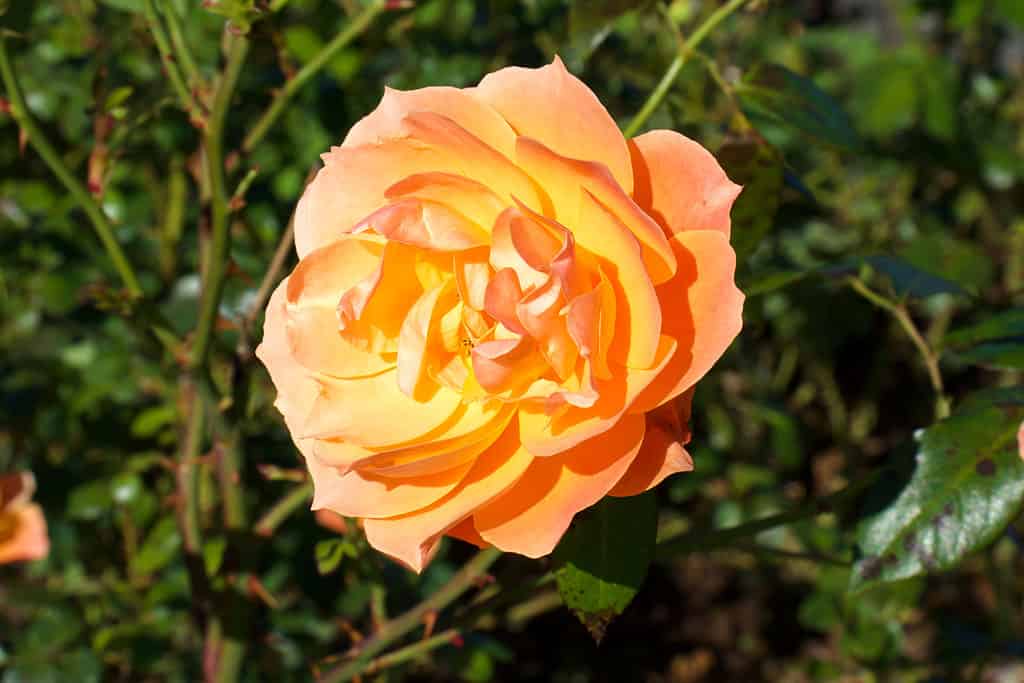
The Lady of Shallot rose’s apricot color makes for a lovely climbing display.
©ChetnaC/Shutterstock.com
Don Juan Rose
The Don Juan rose features double blooms that are classic rose red. The plant is a repeat bloomer that can reach 10 feet tall with a five-foot spread. It’s more of a warm weather rose, though. The Don Juan rose is recommended for Zones 6-10.

The Don Juan rose is a great choice for a climbing rose on a fence or trellis.
©iStock.com/Willy Sebastian
Mortimer Sackler Rose
The soft pink double flowers of the Mortimer Sackler rose feature a delightful Old Rose fragrance. The plant doesn’t feature a lot of thorns, so it’s easy to maneuver the canes around the trellis. It is quite the climber, too, reaching heights of up to 12 feet with a four-foot spread. While it still needs sun (as all roses do), this plant can tolerate a bit more shade than many others. It is recommended for Zones 4-9.
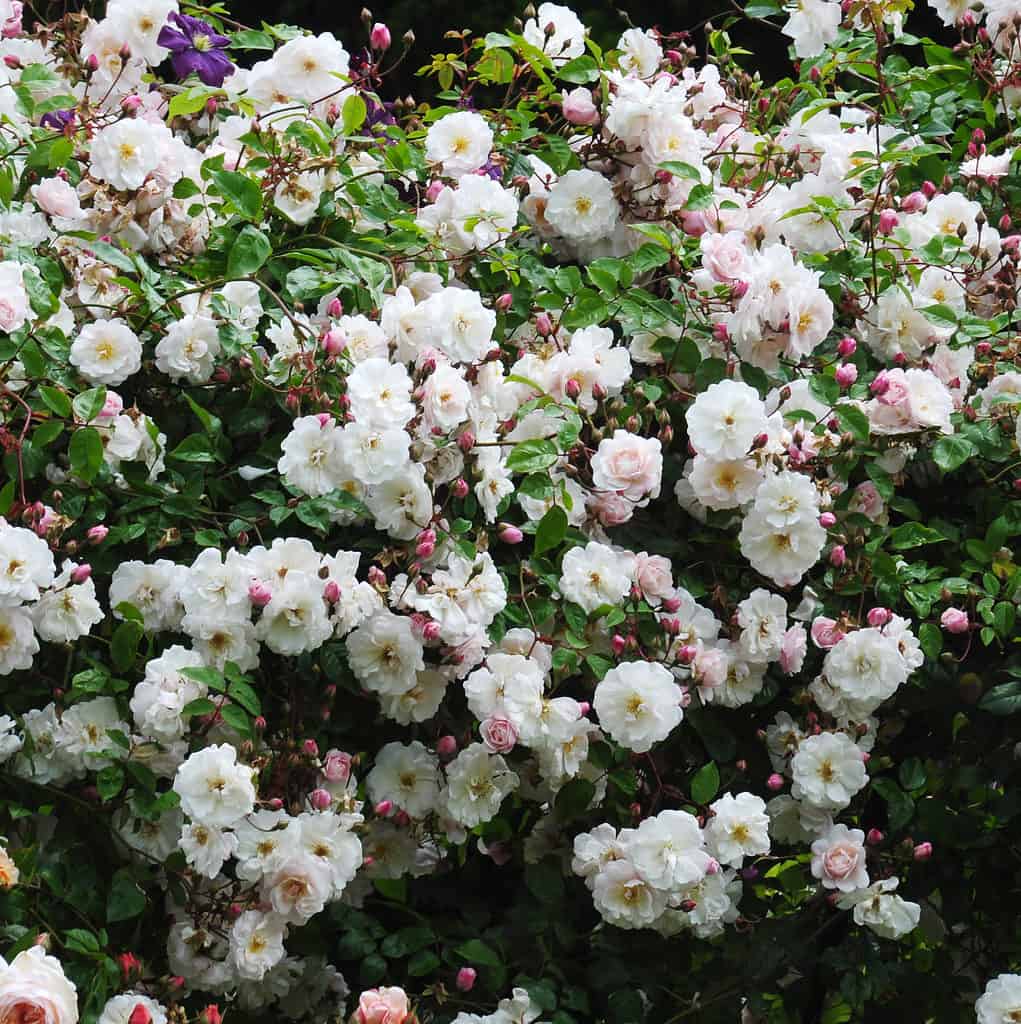
When grown as climbers, Mortimer Sackler roses provide an amazing wall of blooms.
©iStock.com/STEVENSON21
Iceberg Rose
If you’re looking for a white climbing rose, the iceberg rose is for you. The medium blooms are continuous from spring until the first frost of fall. It can grow up to 12 feet high and three feet wide. The name “iceberg” is a bit deceiving because this plant requires full sun. Rather, this rose’s name comes from the soft white blooms that give the plant a lovely iced appearance. It is recommended for growing in Zones 5-9.
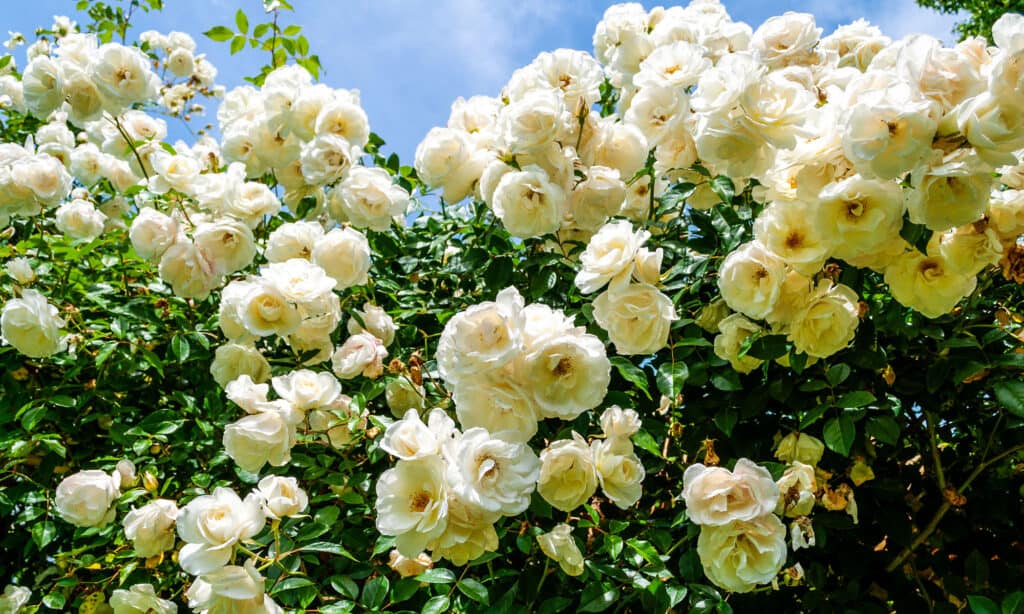
When given full sun, iceberg roses can fill a trellis or other structure with blooms.
©GAT0/Shutterstock.com
Cécile Brünner Rose
This hardy rose can take both the cold and the heat. It is recommended for Zones 4-11. The plant features stunning sprays of fully double pale pink blooms that are displayed for the entire growing season. It is nearly thornless, so it’s a great choice for trellis training. Choose a sunny, well-drained planting site and this rose will delight you for a long time to come.
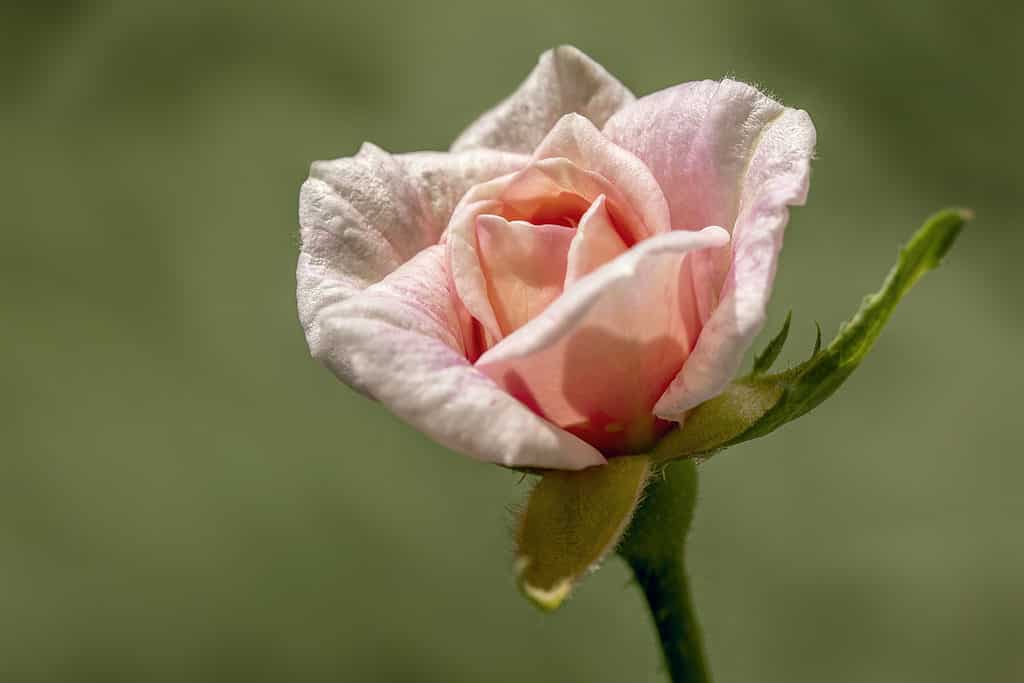
The lovely Cécile Brünner rose is almost thornless, so it’s easy to train as a climbing rose.
©iStock.com/Andrew Haysom
Eden Climber Rose
When a rose has “climber” right there in its name, it’s probably a good choice for a trellis climbing rose. (It is also known as the Pierre de Ronsard rose.) This old-fashioned rose displays fully double blooms that feature hues of pastel pink, yellow, and cream colors. It has superb disease resistance and grows up to 10 feet high with a six-foot spread. It can tolerate a bit more shade than many other rose varieties and is suited for growing in Zones 5-11.
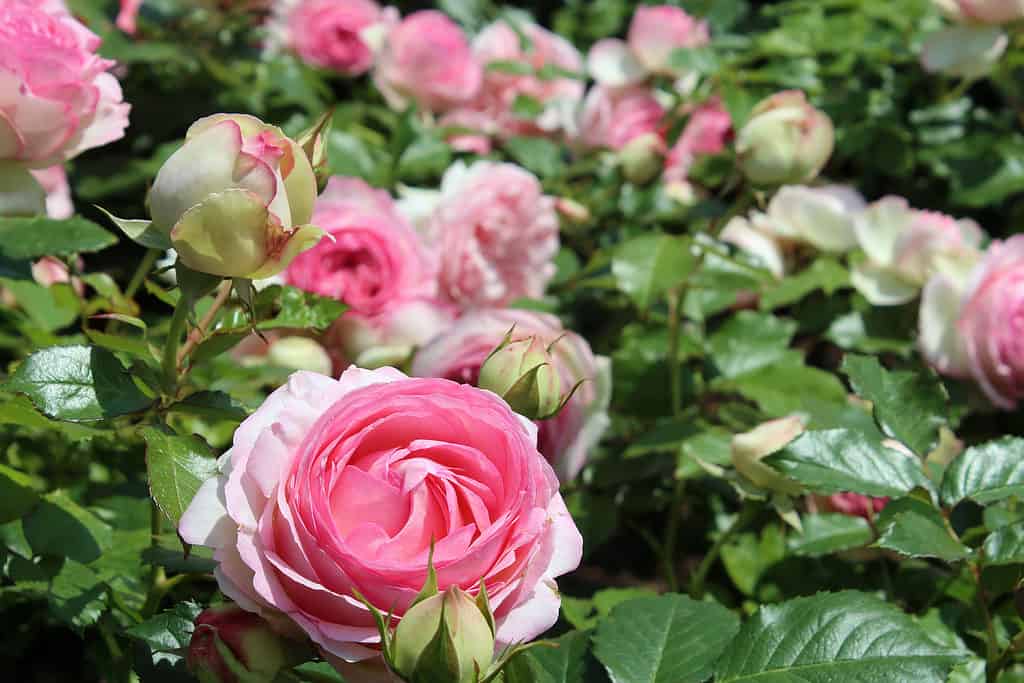
The Eden Climber lives up to its name!
©iStock.com/ranmaru_
Trellis Placement
Now that you have some rose varieties in mind, let’s talk trellis training.
You will need some room to maneuver as you train your climbing rose. When you place the trellis, leave 3-5 inches between the trellis and the wall or other structure behind it.
Choose a sunny location. Roses need six hours of sunlight each day. The site also needs to drain well. Roses require consistent moisture, but a waterlogged site can cause disease or root rot for your rose plant.
For the best results, add some organic matter to the soil at least a month before planting. Dehydrated manure or compost are good choices.
When you plant the rose bush, add some additional organic material to give your plant a jump start. Adding some bone meal along with that organic matter can provide a slower release of nutrients that will benefit the plant for an extended period of time.
Feed the plant once or twice a month with organic fertilizer. Select a variety specifically formulated for roses to ensure the proper levels of nutrients are provided for your plant.
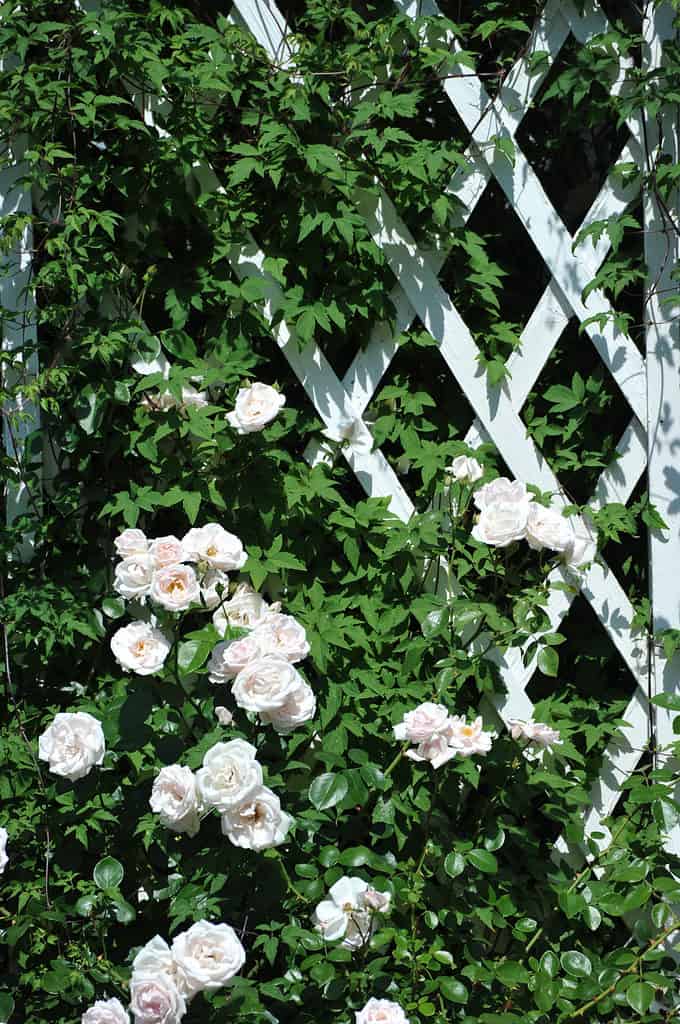
Choose a sunny location for your trellis.
©iStock.com/fordeno
Training a Climbing Rose (And One Common Mistake to Avoid)
Use plant tape or garden twine to secure the rose to the trellis. Young canes are the most pliable, so training the rose to grow around the trellis should start almost immediately.
As the rose bush grows, bend the canes and wind them through the trellis at angles between 45-90°. This is where many growers make a mistake that permanently changes the look of the plant. When a lot of gardeners hear the words “climbing roses,” they automatically think vertical. After all, climbing means “up,” right?
In reality, the key to growing a successful climbing rose is to think less about the vertical and more about the horizontal. The canes need to wind back and forth across the trellis, only slowly moving up the trellis as they grow. If the canes are simply sent vertically up the trellis, you will end up with long, gangly canes that only bloom at the top. The whole point of the trellis is to provide a wall of flowers that covers the entire structure from the bottom to the top. When the plant’s main canes are trained to horizontally zig-zag across the trellis, they will produce laterals that will provide blooms all the way up the framework of the trellis.
When you are in the midst of trellis training a rose bush, do little to no pruning until the entire trellis is covered. The exceptions would be weak or diseased parts of the plant. Cut those away, but otherwise, keep your shears holstered.
After about three growing seasons, you can begin pruning. Cut away some of the old canes to promote new cane growth. If any canes appear weak, prune them so the plant’s nutrients can all flow to the healthy canes. Pruning is best done early in the spring before the plant emerges from winter dormancy.
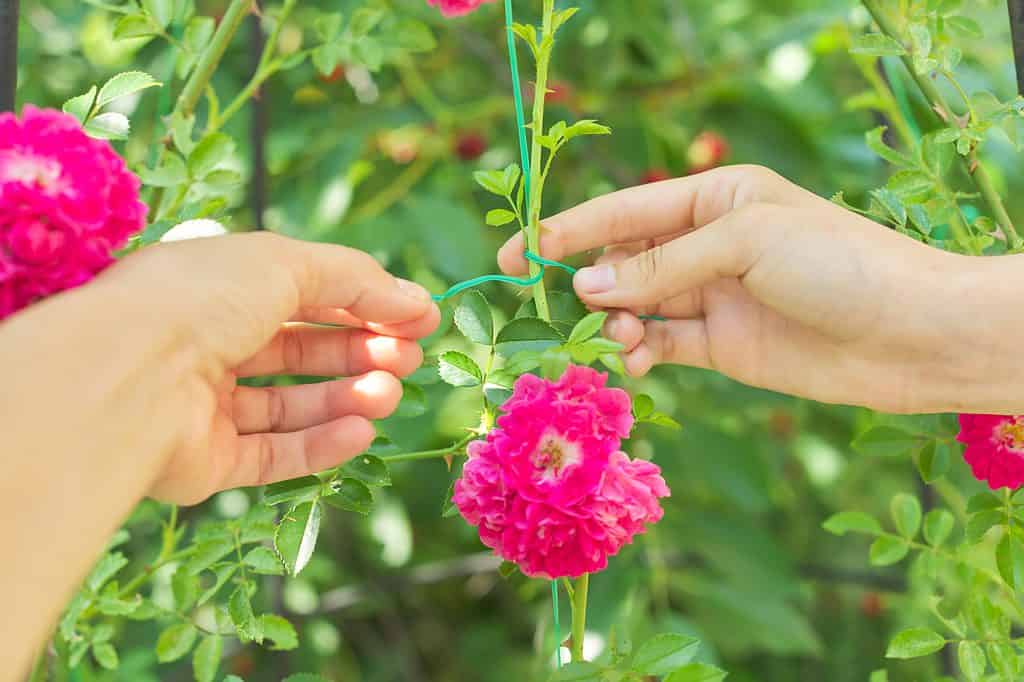
When training roses to climb a support structure like a trellis or fence, focus on horizontal growth before vertical growth.
©iStock.com/Valeriy_G
Training Older Roses
As noted earlier, young rose canes are the most pliable and easy to train. That doesn’t mean you can’t train an established rose bush, though. It can be done, but it has to be done in stages.
Place the trellis and then bend the rose’s canes as far as you can horizontally without stressing or breaking them. Don’t be surprised if they won’t bend anywhere near 90° at this point. Just bend them as far as they are willing to go. Remember, this will be done in stages. Secure the canes with plant tape or garden twine and then wait 4-5 weeks.
After about a month, you’ll be able to bend the canes a bit further, training them more in the direction you want them to grow. Secure them with tape or twine and then wait another 4-5 weeks before you repeat the process yet again. It takes a while, but if you do it in stages, you can train the established rose plant to take the shape that you wish.
If the older rose is already a bit long and gangly, you can just dig it up and start over, but there is also another potential solution. Send the canes of the established plant vertically up the trellis and then plant a second, young rose bush that you can train more horizontally. This easy gardening hack will provide bloom coverage at the top and bottom of the trellis much quicker than digging up the old plant and starting from scratch.

A young rose bush can be combined with an established plant to fill out a trellis more quickly.
©iStock.com/Brett Taylor
The photo featured at the top of this post is © iStock.com/Denise Erickson
Thank you for reading! Have some feedback for us? Contact the AZ Animals editorial team.






